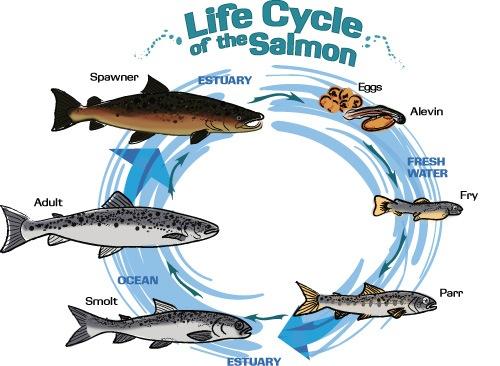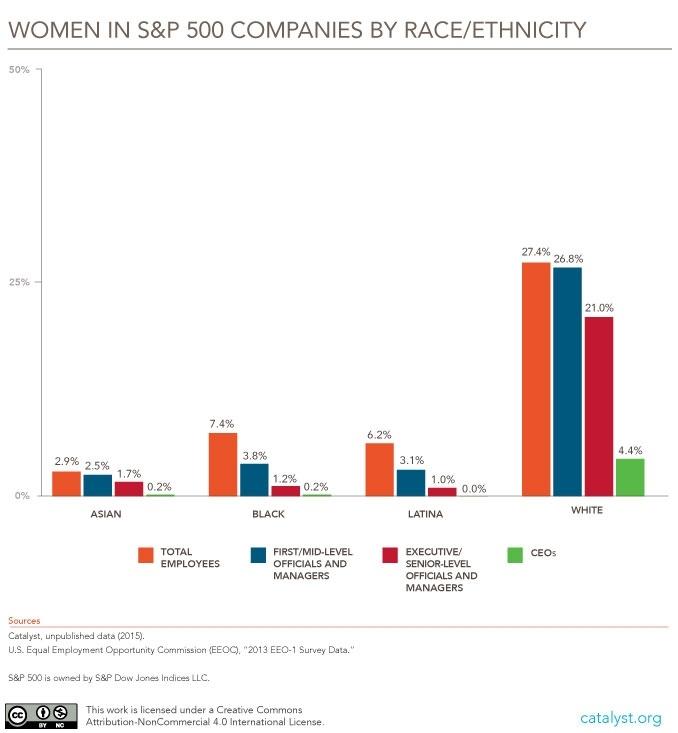Timex Joins Companies Supporting Earth Hour 2015


Earth Hour is this Saturday, March 28, at 8:30 p.m. in your time zone. While Earth Day has been little more than a public relations exercise in recent years, Earth Hour has become more impactful since its first launch in 2007. According to WWF, the organization behind Earth Hour, teams in 162 countries and territories are working to help dim the lights this Saturday. Even fossil fuel-rich Abu Dhabi in the United Arab Emirates, where I lived a year ago, shut the lights for an hour: large hotels and developments such as Masdar City went dark. This year, more companies are joining in the effort, including Timex.
To that end, the watch manufacturer is asking customers, and really anyone visiting its site, to upload a photo and share their pledges in order to spread the word about Earth Hour. The company will donate $1 for each pledge.
Naturally, there is something in it for Timex: the company has its own line of glow-in-the-dark watches, in a bevy of styles that can help you enjoy the hour of darkness. And of course, there would be no point of a campaign without a hashtag, which in this case is #TimeToGLO. Earth Hour has largely grown in awareness because of social media, and this year will be no different. Considering this exercise is run by a small team out of Singapore, the results are impressive.
Last year’s Earth Hour was remarkable at many levels. Over 7,000 cities and towns officially participated in the campaign, and in at least 60 countries, Earth Hour lasted longer than the 8:30-9:30 p.m. time slot. Almost $57 million was raised for a variety of causes, from panda habitat protection to efforts aimed at stopping wildlife crime. Various countries tailored Earth Hour to raise awareness about national issues: Australia focused on coral reef protection, Madagascar focused on deforestation and Argentina pushed legislation to create a new marine sanctuary.
Just as there are many reasons to do what is possible to halt the risks of climate change, WWF offers plenty of options to mark Earth Hour. Spreading the word, of course, is a start. Both going dark and taking a break from all the gadgets presents a stark reminder of the impact our thirst for energy has on the planet are also meaningful. Finally, motivating thousands, even millions of people, to work together on a common goal are why each year Earth Hour continues to make an impact at a global and local level.
Just remember that when you remember the occasion via Twitter or Instagram this Saturday night, be sure that smartphone of yours is charged.
Based in Fresno, California, Leon Kaye is a business writer and strategic communications specialist. He has also been featured in The Guardian, Clean Technica, Sustainable Brands, Earth911, Inhabitat, Architect Magazine and Wired.com. When he has time, he shares his thoughts on his own site, GreenGoPost.com. Follow him on Twitter and Instagram.
Image credit:Timex; WWF
The Color of Salmon: How Much Would You Pay for Orange?


The color of food plays a perhaps surprisingly large role in our perceptions of its attractiveness, as well as our expectations of how it will taste. Take salmon, for example. Studies have shown, and salmon prices reflect, our inherent bias and preference for salmon that is orange to reddish in color.
Wild salmon flesh ranges in color from pink to orange-red. Exactly where the flesh of any particular salmon – sockeye, Coho, King or pink – falls on the color scale depends on the amount of reddish-orange chemical compounds – carotenoid pigments – the salmon ingests. The more astaxanthin-containing shrimp and krill a wild salmon eats, for instance, the more orange to reddish the color of its flesh will be.
Farmed salmon, on the other hand, are fed pellets typically made up of a mix of cheap grain-based feed and oils, from crops such as soybeans, as well as varying amounts of ground-up fish meal and fish oils. Without supplementing their diets or dyeing their flesh after harvesting, farmed salmon would be grayish in color, a definite turn-off for us human consumers. And it turns out that salmon farmers, as well as some consumers, are willing to pay quite a bit more for salmon that's orange to reddish in color. But market prices don't reflect the overall costs of giving farmed salmon this more attractive hue.
The color, and cost, of salmon
In nature, astaxanthin is produced by microscopic algae that are consumed by shrimp, krill and other crustaceans. These animals, in turn, are consumed by salmon and other animals – think: pink flamingos. In this way, the carotenoid pigment and its antioxidant properties makes its way up and around the food web.
The range of color we find in the genera and species of wild salmon varies with the amount of astaxanthin contained in their prey. With feeding grounds in the krill-rich Bering Sea, Alaska’s sockeye salmon, for instance, tend to be the most reddish in color. Consuming less in the way of shrimp, krill and other small crustaceans, Coho, King and pink salmon, on the other hand, tend to take on a lighter orange color.
The sensory signals orange and red pigmentation trigger in our nervous systems go far deeper than visual appeal. It turns out that astaxanthin and canthaxanthin, like other antioxidants, help protect our nervous systems from toxins, cope with stress and stay healthy. They also help keep our joints and skeletal systems strong and flexible. So besides the visual appeal of their orange to reddish color, it turns out that wild salmon flesh is also more nutritious.
Some consumers are willing to pay a considerable premium for wild-caught salmon. In fish markets, wild-caught salmon can cost “two to three times as much as farmed salmon (which is usually $6 to $10 per pound ... [and] serves as the aesthetic standard as well,” Gwynn Guilford points out in a March 2015 article in the Atlantic.
Furthermore, Guilford continues, “[r]esearch by DSM, now one of the biggest astaxanthin makers, shows wealthy shoppers go for darker-hued salmon, which fetch up to $1 per pound more than lighter shades — something other industry research suggests as well. One study found farmed salmon colored lower than 23 on the SalmoFan's scale to be 'difficult to sell at any price.'”
Wild-caught or farmed, we like our salmon orange to reddish
As Guilford highlights in the Atlantic, pigment supplements can make up 20 percent of farmed salmon feed costs -- making them the single costliest ingredient in a salmon farm's operating budget. The higher prices they command more than offset the higher costs, however, making it attractive for salmon farmers to keep doing so.
Overfishing of wild salmon to the point of near annihilation is what led to development and growth of salmon aquaculture and farms in the first place. But as Guilford writes: “The fact that consumers will shell out more for salmon that looks wild – even if it got that way by eating pellets in its pen – hints that people want to be eating wild salmon, but not quite badly enough to buy the real deal.
“If it’s price that’s keeping consumers from buying wild-caught salmon, they might want to consider saving a few bucks more and start demanding farmers cut out those expensive pigments — and sell them salmon that’s gray.”
*Image credits: 1) The Harbour Grill; 2) Trinity Western University
Sustainability of the Thai Tourism Industry


By Kanthima Kanthima
In the last decade, Thailand has enjoyed a surge in its tourism industry, constantly finding itself on top of many travel recommendation websites. According to USA Today, the country’s capital was recorded to be the most geo-tagged location on Instagram just two years ago.
With slightly more than 20 percent of the country’s revenue being indirectly affected by tourism, and the industry contributing to 9 percent of the nation’s GDP in 2013, this field is certainly impacting the Land of Smiles in far more ways than simply finances.
Implications of tourism
Granted that the booming tourism industry ensures that the country is sitting on a thick financial cushion, but too much of something is never good. With the influx of a myriad of tourists, from shopaholics to nature lovers, one cannot turn a blind eye to how this degree of reliance on tourism may affect the country and her people.
Along with financial prosperity, Thailand has also seen her fair share of woes. Recent political instability has shaken the entire nation’s economy, especially so for tourism. Concerned travelers are beginning to rethink if Thailand’s shopping, food and beaches are worth the risk, and CNBC’s 2015 Top Asian Destinations clearly reflects this. On home ground, knowing that tourists pay good money for novelties like elephant rides or a visit to Thailand’s infamous red light districts pushes the ethical boundaries of the locals. Such attitudes on both fronts see Thailand experience the consequences of mass tourism.
With heavy dependence on tourism, these implications may rock the seemingly sturdy boat of Thailand’s tourism industry and, in turn, the entire nation’s economy. Yet, to ensure that this lucrative field holds strong through the storms of the coming years, one ought to look into the concept of sustainable tourism.
Sustainable tourism
Exploring the idea of sustainable tourism not only secures the success of this industry in the long run, but it also allows for positive impacts to be made on the society and environment of Thailand, apart from the economy. Be it medical or educational tourism, this gem of the Indochina peninsula can only reap benefits from sustainable tourism.
-
Educational tourism
Boasting a strong artistic culture, Thailand produces countless artists ranging from those who specialize in the fine arts to street art. This notion is known far and wide across the globe, and many flock to this creative country for body art – tattoos. The increasing fame of Thailand as a hub for this has seen tattoo enthusiasts entering the country to learn from the best.
Institutions like Tattoo School Thailand are seeing more and more learners enroll in courses to pick up tattooing. What may seem like a secular phenomenon is in fact a form of educational tourism, which the country can look at expanding.
Educational tourism has also seen diving schools offering packages to travelers interested in attaining diving certifications at locally-run resorts. This gives tourists the chance to experience what Thailand’s marine life has to offer while locals earn from offering various services from boat rides to conducting the course. This in addition to countless culinary schools where tourists can enroll in basic courses of Thai culinary -- taking back home with them a lifelong souvenir that can be easily shared at family and social events.
-
Ecotourism
Thailand is teeming with lush greenery and wildlife. With many multinational resorts setting their sights on the untouched beaches of the country, Thailand finds herself navigating tricky waters as she juggles maintaining the tourism industry that she relies on so greatly and retaining the wonderful works nature has bestowed on her.
Nonprofit environmental organizations based in many scenic locations of the country have come up with a possible solution: Offering the adventurous an opportunity of a lifetime to experience the raw beauty of Thailand through activities like living in cultural villages, these organizations ensure that these accommodations are constructed with protecting the environment and locals in mind.
-
Volunteer tourism
Be it a gap year or sabbatical from work, Thailand offers more than just city living, shopping, eating and sun-tanning. Many who look at sustainable tourism are offering travelers the opportunity to volunteer and give back during their trip to Thailand. From teaching English to assisting in a project to build a well for small villages, tourists can leave a positive impact on Thailand apart from their carbon footprint.
-
Medical tourism
Being the first Asian nation to attain Joint Commission Internal (JCI) accreditation in 2002 makes Thailand a favorite for those seeking medical attention; be it open-heart surgery or gender reassignment. The advancement of the country’s medical technology, coupled with lower premiums, are proving to be a major pull factor -- attracting more than 1.8 million foreign visitors in 2013 alone.
These features give the world more reasons to pay a visit to Thailand apart from leisure alone. Not only does it boost the country’s economy, the increasing demand created by medical tourism inevitably attracts more overseas medical practitioners hoping to set up shop in Thailand for a piece of the pie as well.
Conclusion
To sum it all up, while many agree that Thailand has without a doubt made a name for herself as a top travel destination, industry players and policy makers ought to give some thought to its sustainability. Although mass tourism has boosted the economy over the past years, one might want to look around at the social and environmental effects that it has had on the country. Therefore, in order for the industry to continue to flourish without implicating on its natural resources – people, culture, nature – investing in the various forms of sustainable tourism might just be the way to go from here.
Image credit: Flickr/Mike Behnken
Kanthima Kanthima is the owner and CEO of a Thailand Tattoo School. Aside from running this tattoo school, she is also constantly contributing to various discussions of sustainability in her hometown of Hua Hin and her country, Thailand.
Disney Vanquishes Greenhouse Gas Emissions


The Walt Disney Co. is more than the company that provides a good time to families at at Disneyland and Disney World. It is a company that is making efforts to reduce its greenhouse gas emissions, as its 2014 Citizenship Performance Summary shows. Disney has reduced its net emissions by 31 percent from 2012 levels. Its goal is to reduce net emissions by 50 percent by 2020, and the company is on track to meet the target.
Implementing energy efficiency projects is one way that Disney continues to reduce its GHG emissions. Some of the key energy efficiency projects the company launched in 2014 include technology improvements and operational process improvements. The use of fuel cells is a good example of one of Disney's energy efficiency projects. A 1 megawatt fuel cell was installed at Disney’s Pixar Animation Studios in Emeryville, California. The fuel cell supplements electricity use throughout the PIxar campus. Disney is also in the process of installing a fuel cell at its Burbank Studio Lot campus.
Building to achieve LEED certification is still another way that Disney uses less energy. The new Digital Center on the ESPN campus achieved LEED certification for energy reductions and operational efficiencies. The 194,000-square-foot Digital Center opened last fall in Bristol, Connecticut. It uses things like high efficiency condensing boilers and high thermal property glazing to keep it warmer in the winter and cooler in the summer, according to ESPN MediaZone.
Working toward zero waste-to-landfill
Disney has a lofty goal of achieving zero waste. However, it is not as lofty of a goal as you would think. The company plans to achieve the target in increments: By 2020, it plans to achieve a 60 percent waste diversion rate. By the last quarter of 2014, Disney achieved a 48 percent waste diversion rate.
There are several examples of how Disney properties reduce waste, including:
- The Disneyland Resort in Anaheim, California, has a food scraps diversion program at about 60 food and beverage locations. Food scraps are collected and sent to a local facility where they are processed into feed nutrients for farms animals.
- Walt Disney World Resort in Florida is the first business customer of a local business, Harvest Power Orlando, which converts organic waste into biogas and natural fertilizers.
- Hong Kong Disneyland collaborates with Foodlink Foundation in a food donation program that turns extra ingredients into meals for people in need.
- There is a food waste collection in the restaurants and employee cafeteria of Disneyland Paris. The waste is collected and turned into energy or organic soil amendments through bio-methanization.
Saving water in drought plagued California
California is in the fourth year of its worst drought in recent history. Snowpack levels are at an all time low. Water conservation isn’t just something that is nice, but is necessary.
Disney clearly understands that fact: The company collaborated with the cities of Burbank and Glendale to convert their irrigation systems to reclaimed water. Last year, this project saved over 5.6 million gallons of potable water in Burbank and more than 9 million gallons in Glendale. That's a great accomplishment in a water poor state.
Image credit: Binu Nair
China lauds environmental milestone with first biofuel passenger flight


Boeing, Hainan Airlines and Sinopec have celebrated China's first passenger flight with sustainable aviation biofuel, a key environmental milestone for China's commercial aviation industry.
The regularly scheduled Hainan Airlines flight - which carried more than 100 passengers from Shanghai to Beijing in a Next-Generation 737-800 - used biofuel made by Sinopec from waste cooking oil collected from restaurants in China. Both of the airplane's CFM International CFM56-7B engines were powered by a fuel blend of approximately 50 percent aviation biofuel mixed with conventional petroleum jet fuel.
"As a fast-growing domestic and international carrier, Hainan Airlines is demonstrating our environmental commitment by showing that aviation biofuel can play a safe and effective role in China's air transport system," said Pu Ming, vice president of Hainan Airlines, who piloted the plane.
Sustainably produced biofuel, which reduces carbon emissions by 50% to 80% compared to petroleum through its lifecycle, is expected to play a key role in supporting aviation's growth while meeting environmental goals. The Boeing Current Market Outlook has forecast that China will require 6,020 new airplanes by 2033 to meet fast-growing passenger demand for domestic and international air travel.
World Water Day: Driving Digital Engagement to Address the Water Crisis


By Whitney Dailey
The World Economic Forum recently announced the water crisis as the No. 1 global risk based on impact to society. One in nine people lack access to safe water; 2.5 billion people do not have access to basic sanitation; and every minute a child dies of a water-related disease. And yet, for many people across the globe, access to clean water is as easy as turning on a tap, and the plight of the 750 million people who lack access to safe water can seem remote.
To resolve this disconnect, many organizations are turning to digital channels to get their message out, with astounding results.
Given that more people have access to mobile phones than toilets, all eyes are on digital as a way to bring this issue close to home. The 2014 Cone Communications Digital Activism Study found that Americans are primed and ready to support causes they care about online. And the recipe for engagement is quite simple. When asked what factors would motivate Americans to participate in social and environmental issues or campaigns online, nearly 4 in 5 consumers stated they’d get involved if there was an urgent need for immediate support (79 percent), it was clear how their support would make a real impact (79 percent) and it was easy to participate (77 percent). Organizations looking to drive understanding and action around water scarcity should keep these three drivers in mind: impact, urgency and ease of participation.
Impact
Showing Americans how their small efforts can actually make a difference is a strong motivator. In fact, highlighting impact can even trump brand recognition -- nearly three quarters of Americans say they’d rather make an impact on an issue than be familiar with the organization they’re supporting.
UNICEF’s Tap Project shows how even the act of unplugging from your digital device can make an impact. This year UNICEF is asking Americans to “unlock 14 million days of clean, safe water for children around the world” by staying off their phones. After visiting the dedicated mobile website, users can accept the challenge of providing one day of clean water for a child in need for every 15 minutes they keep their hands off their phone. As users count down the minutes, mobile screens light up with facts about UNICEF’s work, how users match up against record holders and words of encouragement to keep going, highlighting individual and collective impact. Once they have achieved the goal, a donation is triggered from one of UNICEF’s partners.
Urgency
With a crisis that is so far away from home, it’s hard for most Americans to process the magnitude and importance of the issue. Yet, individuals can be motivated to get involved – that’s clear from the outpouring of support and donations we see following major international disasters. Storytelling is one of the most powerful ways to create that sense of urgency – showing individuals just why this issue is not only acute, but far-reaching. To weave that narrative, storytellers can leverage the content Americans most want to see -- written articles (48 percent), videos (44 percent) and pictures (42 percent).
Earlier this year, Water.org and Stella Artois launched “Buy a Lady a Drink” at the Sundance Film Festival. The campaign features a series of short, yet powerful, films illuminating the real lives of women who spend their days hauling water back to their homes. Through highlighting the personal stories of these women and just what is at stake on their difficult journey to a clean water source (which can oftentimes lead to wells that are broken or tapped dry), Water.org helps to make the issue tangible and urgent.
To encourage consumers to take action, Stella Artois created a chalice inspired by the cultural heritages of India, Ethiopia or Honduras which consumers can purchase for $12. Every chalice purchased will provide five years of clean water for one person in the developing world. The campaign proved to be so successful, they quickly sold out of the first edition of chalices.
Ease
When it comes to engaging Americans around issues online – the easier the better. And each click of a button is more valuable than you may think. Sixty-four percent of Americans say if they “like” or “follow” an organization online, they’re more likely to support that issue in other ways such as volunteering or donating.
Charity: water makes supporting the global water crisis as effortless as turning a year older. The wildly successful charity: water birthdays campaign asks individuals to donate their birthday to the cause, accepting donations rather than presents. Users simply pledge their birthdays via their Facebook account and watch as the donations pour in. The campaign has already raised $9 million (an average of $770 per birthday) and recruited a host of celebrities to promote the effort. Founder Scott Harrison also hopes to put sensors on wells built by the nonprofit, so donors can see just how much water flows from the wells they helped build.
The water crisis is just one of many global issues we face today that requires immediate aid, making it increasingly important to frame every cause to motivate for action – and digital gives us ever more opportunities to do this. By positioning campaigns as urgent, impactful and easy to get involved, marketers can harness the power of digital to push forward pressing social and environmental issues.
Creating a campaign with a digital activation? Check out the five digital engagement principles from the 2014 Cone Communications Digital Activism Study.
Image credits: 1) UNICEF "Tap Project" App Screenshot 2) Stella Artois and Water.org 3) Charity: water
Whitney Dailey is a supervisor at Cone Communications on the CSR Insights & Intel team, where she leads the development and distribution of industry-leading research studies, including the 2014 Cone Communications Digital Activism Study and 2014 Cone Communications Food Issues Trend Tracker. Her expertise in corporate social responsibility, sustainability and social media helps to guide thought leadership at the agency. Whitney is a guest lecturer at Harvard University, Boston University and Simmons College and tweets at @WhitneyDailey.
3p Weekend: 10 Corporate Leaders in Water Stewardship


With a busy week behind you and the weekend within reach, there’s no shame in taking things a bit easy on Friday afternoon. With this in mind, every Friday TriplePundit will give you a fun, easy read on a topic you care about. So, take a break from those endless email thread and spend five minutes catching up on the latest trends in sustainability and business.
This Sunday, March 22, is World Water Day -- a day to celebrate water and make a difference for those who lack access to it. To mark the occasion, this week we're rounding up 10 companies that are proven leaders in water stewardship.
1. Unilever
Thanks to a lifecycle assessment, Unilever discovered that the majority of its water footprint (85 percent) comes from consumer use of its products. In the Unilever Sustainable Living Plan, the company set an ambitious goal to halve the water associated with the consumer use of its products by 2020. "[T]hat means the domestic water used with our products in seven water-scarce countries which make up half the world’s population," the company said on its website.
Unilever has also reduced water use in its manufacturing process by 29 percent per ton of production, as compared to a 2008 baseline. The company also plans to source all of its agricultural products sustainably by 2020, with water impact being one of seven key indicators.
2. AB InBev
Most of the water Anheuser-Busch InBev uses -- more than 90 percent -- goes into growing the barley and other agricultural inputs used in the brewing process. To address this challenge, AB InBev launched water management pilot projects in key barley-growing regions, including Mexico, China and the American Midwest.
The company is also piloting a farm-level benchmarking tool, called SmartBarley, that allows growers to compare their crop yields and environmental impact side-by-side with their peers. Last year, the company scaled the program to reach more than 1,900 barley growers across Argentina, Brazil, Canada, China, Mexico, Russia, the U.S. and Uruguay. If that's not enough, the company is also a signatory to the U.N. Global Compact CEO Water Mandate and a member of its steering committee.
3. PepsiCo
PepsiCo is a company that has long made water conservation a priority. In 2009, it became one of the first global companies to publicly recognize water as a basic human right.It saved nearly 3.6 billion gallons of water in its direct operations in 2013, the most recent year data is available. The company is also active in the fight to increase access to clean drinking water around the world: PepsiCo and the PepsiCo Foundation operate water conservation, distribution, purification and hygiene initiatives for underserved communities in China, India, Mali, Brazil, Colombia and other Latin American countries.
4. Levi Strauss & Co.
In advance of World Water Day, Levi's CEO Charles V. Bergh wrote an op/ed for Fortune magazine encouraging other CEOs not to wash their jeans. At-home washing is the largest water impact associated with the company's products, as determined by a lifecycle assessment, and the company launched a consumer awareness campaign in 2007 to encourage shoppers to wash their jeans less frequently. Levi's was also one of the first in the apparel industry to create a water recycling process for its manufacturing.
All this hard work paid off: Earlier this month, the company hit a major milestone with respect to water stewardship: It saved its billionth gallon of water through sustainability initiatives since 2011.
5. Coca-Cola
Through water use reduction and drinking water access initiatives, Coca-Cola proves it's a leader in water stewardship. By 2020, the company hopes to replenish 100 percent of the water used in its finished products, and it's on track to achieve that goal: The company replenished 68 percent of the water it used between 2005 and 2013 -- totaling more than 28.6 billion gallons to date. Coca-Cola returned the water to communities through 509 local water projects in more than 100 countries, benefiting more than 1.9 million people.
The company also aims to improve water efficiency in its manufacturing operations by 25 percent by 2020 (compared to a 2010 baseline). It has improved systemwide water efficiency for 11 straight years -- for an 8 percent total reduction in water use. The company already met its initial goal to improve water efficiency by 20 percent from 2004 to 2012, with a 21.4 percent improvement.
6. General Mills
As a founding partner of the Alliance for Water Stewardship, General Mills has a big reputation to uphold when it comes to conserving Earth's most precious resource. But it appears the company is up to the challenge.
General Mills CEO Ken Powell declared the company’s commitment to water conservation at the the Nature Conservancy's Global Water Summit in Chicago last year, saying: “We know that without healthy water for land, ecosystems and wildlife, agriculture simply does not work. Businesses languish. Economies falter. People suffer.”
Following Powell's statements, the company released a new water policy, which includes the company’s direct operations and its suppliers. It is committed to ensuring that its direct operations don’t “encroach on the human right to water and sanitation in the communities in which we operate,” according to the policy.
7. Marks & Spencer
U.K. department store chain Marks & Spencer has partnered with the World Wildlife Fund since 2004 to support sustainable fishing and forestry. In 2011, the partnership expanded to include water stewardship. WWF will help the chain to identify top water-risk hotspots within its foods supply chains. The company is also a founding partner of the Alliance for Water Stewardship and seeks to further reduce its water consumption under Plan A, the company’s sustainable business transformation program.
8. Tom's of Maine
Natural personal care company Tom's of Maine uses a lot of steam at its manufacturing plant, for everything from heating and cleaning to sanitizing. But the company put a water and steam recycling process in place at its Sanford, Maine, manufacturing plant to reduce its water footprint, and it's already seeing promising results: The company cut water use by 25 percent per ton of product since 2011, with a goal to cut 15 percent more by 2020.
9. AT&T
Back in 2013, AT&T teamed up with the Environmental Defense Fund to develop a framework that can help companies reduce their water use from cooling and manage their water risk. Now, the two are working together to encourage companies in water-stressed regions — Texas (Dallas-Fort Worth and Houston), Phoenix, California (Los Angeles and the Bay Area) and Denver — to adopt the toolkit and cut costs while reducing their impacts on local water resources.
10. Mars
Mars Inc., the parent company behind popular labels like M&Ms, Pedigree and Flavia, acknowledges that its manufacturing processes "use a considerable amount of water." But the company is taking steps to cut back.In 2013, the company's total water withdrawal was nearly 8 billion gallons. More than half of this total -- around 4.1 billion gallons -- "was directly returned to the environment by Mars at the same or higher quality than when it was extracted," the company said. In addition to replenishing water, Mars aims to reduce its overall water use by 25 percent by the end of this year (compared to a 2007 baseline). The company managed to cut water use by 13.6 percent between 2007 and 2013, and we'll keep our eyes on how they stack up to their lofty 2015 goal.
Image credit: Flickr/Barbara Walsh
Can the Guardian’s Climate Campaign Effect Real Political Change?


The early 20th century muckraking journalists criticized the meat-packing industry and child labor practices, Woodward and Bernstein exposed Nixon’s Watergate scandal, and Northwestern University journalism students helped to overturn wrongful death-row convictions. These are just a few examples of the power investigative journalism has to make a lasting impact on politics and society at large.
But there’s one important issue that journalism has consistently failed to cover properly: climate change. And now, a new campaign from the United Kingdom’s Guardian aims to change that. The publication is putting the debate on climate science to bed and wants to not only educate the public on climate change, but also inspire individuals, governments and companies to take action on the issue.
Why has the media done such a poor job reporting on our changing climate?
“The problem with this story [climate change] is – which is why journalism has, if we’re honest about it, failed -- it’s so big, and it doesn’t change much from day to day,” said Alan Rusbridger, the Guardian’s outgoing editor-in-chief, on the first episode of a podcast series about the climate project. “Journalism is brilliant at capturing momentum or changes or things that are unusual. If it’s basically the same every day, every week, every year, I think journalists lose heart.”
Rusbridger came up with the idea for the initiative on Christmas Eve, as he reflected on his legacy and embarked on his last year at the Guardian’s helm, he said. Sitting next to a crackling fire burning carbon in his fireplace, Rusbridger thought about his meeting earlier that year with climate activist and 350.org founder Bill McKibben. And just as so many British prime ministers become environmentalists in the last year of their terms, he said, Rusbridger decided that his last hurrah at the paper would be this climate campaign.
But Rusbridger didn’t want the Guardian’s new climate coverage to simply be more articles on the topic. He is challenging his staff to find a new way to tell the story of climate change, he said: one that forces readers to sit up and pay attention, rather than leaving them bored or hopeless and depressed.
Rusbridger gave a preview of the paper’s upcoming reporting in a recent column:
“We will look at who is getting the subsidies and who is doing the lobbying. We will name the worst polluters and find out who still funds them. We will urge enlightened trusts, investment specialists, universities, pension funds and businesses to take their money away from the companies posing the biggest risk to us. And, because people are rightly bound to ask, we will report on how the Guardian Media Group itself is getting to grips with the issues.”
Indeed, the Guardian’s climate campaign has kicked off with a bang – with a call on The Bill and Melinda Gates Foundation and Wellcome Trust to divest from fossil fuels, including a petition that has already gathered 60,000 signatures. The publication has released several editorials about what McKibben thinks is our best bet to prevent global temperatures from increasing more than 2 degrees Celsius – the threshold at which scientists agree the most catastrophic effects of climate change can be avoided: not extracting and burning up the reserves of fossil fuels that companies have yet to exploit. McKibben summed up his recommendations with these clever catchphrases that the Guardian echoed: “Leave it in the ground." "Keep oil in the soil." "Keep coal in the hole.”
While journalism criticizing the status-quo is hardly a new phenomenon, the Guardian’s specific calls to action, its use of online engagement tools like petitions and its behind-the-scenes podcast series providing transparency on the climate project is both groundbreaking and exciting. As the narrator of the first podcast episode points out, if the Guardian does this campaign right, it could change the world. If it doesn’t, it could take down its editor, reputation and the whole paper. But whatever the result, at least the Guardian staff tried to make a difference on what is – as the podcast series’ title reiterates – “the biggest story in the world.”
Image credit: Flickr/Richard Dawson
Passionate about both writing and sustainability, Alexis Petru is freelance journalist and communications consultant based in the San Francisco Bay Area whose work has appeared on Earth911, Huffington Post and Patch.com. Prior to working as a writer, she coordinated environmental programs for Bay Area cities and counties. Connect with Alexis on Twitter at @alexispetru
Women of Color: A Silent Voice in Corporate America


Women have made significant strides in the corporate workplace in recent decades. But statistics published by Catalyst, a nonprofit organization dedicated to improving women's access to opportunities in business, suggest that women of color still have a long way to go to reach parity in corporate America.
Latina, Black and Asian women fall far below the threshold of representation when it comes to holding jobs in America's largest corporations. Nearly a third of the country's female workforce are women of color, yet less than 3 percent hold seats on boards of directors for Fortune 500 corporations.
Just as startling: Only 16.5 percent of the workers in S&P 500 corporations are women of color.
"In an era of increased efforts to diversify corporate boards, it is tempting to think that women of color -- Asian, Black and Latina -- would be highly sought after. But this isn't the case," the writers said.
And for those who have the skills, education and background to serve in management or advisory positions, there's often a catch, said Catalyst: "Getting on the board requires already having served on one."
A few other statistics:
- 3.1 percent of board seats for Fortune 500 corporations are filled by women of color, but that is only because a quarter of those board members sit on multiple boards.
- 4.4 percent of S&P 500 board positions held by women were filled by Latinas, while 3.7 percent were filled by Asian women and 11.7 by Black women.
- 0.40 percent of CEOs are either Asian or Black
- 0 percent of CEOs are Latina
Percentages of S&P 500 board seats held by women by race/ethnicity in 2014
"Relying on limited networks to fill board seats shrinks the pool of board-eligible women of color to a puddle," note the writers. Instead, "boards looking to diversify can disrupt the default by reaching beyond their regular network of contacts to find well-qualified, diverse candidates."
Image credits: Catalyst. Women in S&P 500 Companies by Race/Ethnicity. New York: Catalyst, March 2015.
Ohio State University Latest Campus to Launch Bike-Share Program


At a time when universities' tuition keeps rising while they offer less value to students, at least there is one program they offer to help students keep some costs down --bicycle sharing. Ohio State University is the latest campus in the U.S. to launch a bike-share program, which will begin this summer or fall.
Bicycle sharing offers plenty of benefits to cities, companies and, in this case, a college campus: reduced carbon emissions, which more universities are now counting with increased frequency; fewer bike thefts, one bane of campus life; and more exercise to burn off those pesky dorm food carbohydrates. Plus, bicycling is a better way to get around campus instead of those janky shuttle buses.
To that end, Ohio State has chosen Zagster to run its bicycle-sharing program. The selection of Zagster over Motivate (and three other vendors) did not please everyone in Columbus, however. According to the Columbus Dispatch, some residents and leaders in the state’s capital were pushing for Ohio State to integrate with Motivate’s CoGo program in Columbus. But, at a time when everyone is watching budget line-items like a hawk and bike share programs still garner their share of skepticism, Zagster offered a cost-per-bike proposal that was less than that of Motivate. The disappointment should dissipate quickly as Columbus is already one of the more progressive “smart cities” in the Midwest; the chances are high that both programs will thrive and expand over time.
“It’s a real shot in the arm to have been selected by the Ohio State University, given the quality of the competitors,” said Tim Ericson, co-founder and CEO of Zagster. “It’s a huge opportunity to show how our simple and flexible model is a great fit for universities. And we’re really looking forward to adding a variety bikes in the mix to enable more people access to the freedom and joys of bike riding. From the start, it has been our mission to get more people on bikes, and we couldn’t be happier to partner with OSU.”
The system will start with 115 bicycles, spread across 15 stations -- some of which will be specially designed for students with special needs. Tandem, hand cycle, electric assist, heavy-duty and three-wheeled cargo bikes are among the two-wheelers that will be included in Ohio State’s bike-share program.
Zagster also operates bicycle-sharing programs at Yale University, Duke University, Princeton University, Santa Clara University and California State University, East Bay.
Image credit: Zagster
Based in Fresno, California, Leon Kaye is a business writer and strategic communications specialist. He has also been featured in The Guardian, Clean Technica, Sustainable Brands, Earth911, Inhabitat, Architect Magazine and Wired.com. When he has time, he shares his thoughts on his own site, GreenGoPost.com. Follow him on Twitter and Instagram.